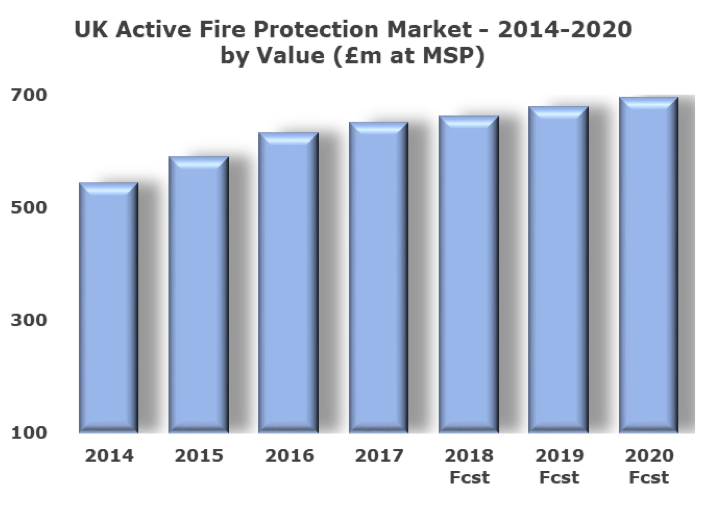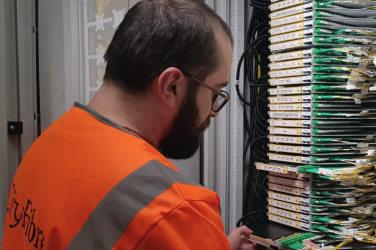According to a report by AMA Research, the total market size for active fire protection systems in the UK saw good growth to 2016 at between 7% and 9% per year, in-line with higher levels of construction output across key end-use sectors such as education and offices. However, AMA’s estimates – which exclude installation, service and rental income – suggest weakening growth to 3% in 2017 and 2% in 2018, due to a fall in overall business confidence, with medium term forecasts to 2020 also moderate.
The sector is mature and – in the absence of any significant changes to Building Regulations and Standards in recent years – has been primarily driven by the wider performance of the UK building and construction market. That said, publicity and interest surrounding the fire protection industry has increased following the Grenfell Tower tragedy, and it is likely that the sector will see additional investment in the medium term.
In the wake of the Hackitt Review, Fire Industry Association members have reported a significant increase in enquiries relating to fire safety, although the latest feedback provides limited evidence that this is leading to increased new orders for fire protection products, with no formal legislation in relation to this introduced at this stage.
In terms of product mix, the active fire protection market is comprised of alarms or detection systems and suppression systems and equipment. Alarms and detection systems account for around 62%, with the majority of installations of products and systems going into the non-domestic sectors, while domestic smoke alarms account for a smaller percentage of the market in value terms.
A key feature of the market is technology and increasing integration with fire and security systems. Improvements in wireless capability has led to further growth in the use of wireless smoke detectors, particularly for retrofitting within existing areas that may be hard to wire, such as historic buildings.
IP functionality is now standard in many fire control panels, and many smoke detectors have wireless capability. The greater use of IP within fire protection products has also enabled the use of video fire detection, where CCTV images are analysed by mathematical algorithms to detect smoke or flames.
A key driver of innovation has been the industry’s desire to continue reducing the likelihood and number of false alarms, and the majority of innovations has been in detection technology rather than suppression. Developments have included improved capability of sensor technology in smoke detectors that can detect more quickly, with greater reliability and with a greater degree of differentiation between different types of smoke and vapours. Another trend is the growing installation of voice evacuation devices to replace traditional sounders and sirens.
The active fire protection market continues to experience price competition and a strong focus on the lifetime cost of fire and security systems, and many suppliers are offering additional services including maintenance and service contracts to improve revenues and generate repeat business.
“Forecasts suggest slower growth over the next few years for the fire protection market,” said Hayley Thornley, market research manager at AMA Research. “With no immediate significant technical changes expected in the regulatory aspect of fire protection as a result of the Hackitt Review, the main driver of future growth will be the moderately positive outlook in construction activity in general, and in particular non-residential construction, with some output sectors which generate significant demand for fire protection products are forecast to slow down in the next few years.”
Key end-use sectors for the active fire protection market include industrial and office markets, and annual construction output in both of these sectors is forecast to decrease between 2017 and 2019, and have a negative impact on demand for active fire protection, particularly on the suppression sector. Strong growth is however forecast in the UK data centres market, which may generate particular demand for inert and synthetic gaseous suppression systems, and though the domestic sector is not a major source of demand, the growth in high-rise construction may provide a stimulus for sprinkler-based systems.
The Active Fire Protection Market Report – UK 2018-2022 report is available now and can be ordered online on the AMA website.







